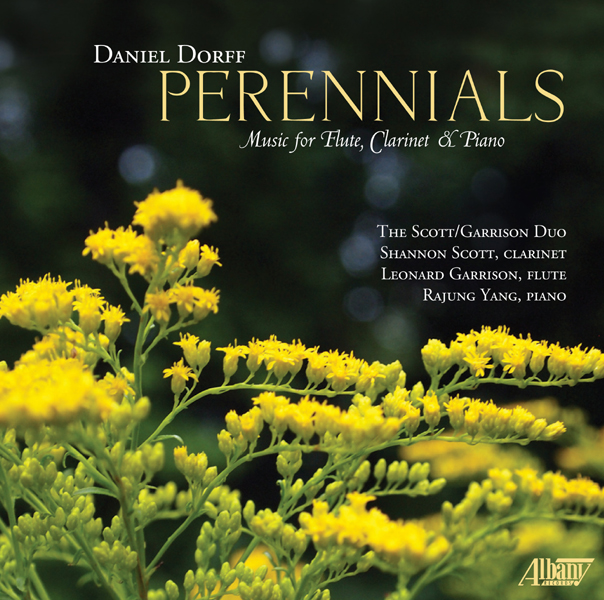Music by DANIEL DORFF |
|
| PROGRAM NOTES by the composer | |
|
Three Romances for Flute and Bb Clarinet |
|
|
One day in July 2006, a frisky-sounding duet for flute and clarinet just popped out. It was a complete movement, but too short to be a stand-alone composition, so I decided to write a few more companion movements. The next day I wrote beginnings of two more, and then went back to work on the concerto. In January 2007 the piano concerto was done, and I came back to these sketches. One turned into a steamy tango, perhaps influenced by the style of Jobim, so I called it "Sultry." The other was very lyrical, and full of a sighing motive, so I called it "Languid," not realizing this might imply a slower tempo than the allegro that's called for. Given those subtitles, the last movement became "Frisky," which is perhaps an understatement. Oddly, I'd written three movements without knowing what order to play them in. Despite the many long notes, "Languid" is an allegro, and despite the many 8ths and 16ths, "Sultry" is most effective when played as a slow steamy bump-and-grind song. The "Frisky" finale may be played as fast as remains comfortable. The title THREE ROMANCES was an afterthought, perhaps inspired by Schumann's title, simply because they're lyrical with a lot of expressive potential. PERFORMANCE SUGGESTIONS I've had occasion to perform THREE ROMANCES (as clarinetist) with many different flutists and have heard a lot of recordings; it's been fascinating to hear so many varied interpretations! Here are some suggestions: I. Languid - Despite
the movement's title, the tempo instruction is Allegro, and it's actually more
engaging at quarter = 84, but
certainly not slower than marked. II. Sultry - At least for me, the
most essential element of a tango is its flirtacious teasing nature. Both the
clarinetist and the flutist can set this mood by very slightly delaying
occasional 16th-pickups -- not perceptibly, just a microscopic
tease. This rhythmic peek-a-boo can guide the feel of the whole movement,
setting up expectations and then teasing about fulfilling them; the ritardando
in bar 10 is a perfect example. This shouldn't be overdone, however, since the
expectations have to be expected! III. Frisky - The publication
calls for quarter = 120, but looking back a few years later, it's better around
124 or faster, with the broad melody feeling like a waltz. The 16ths in the clarinet's
opening and the flute's corresponding passage at 11 should be very smooth and
beatless. |

|
last updated February 19, 2020 |
|